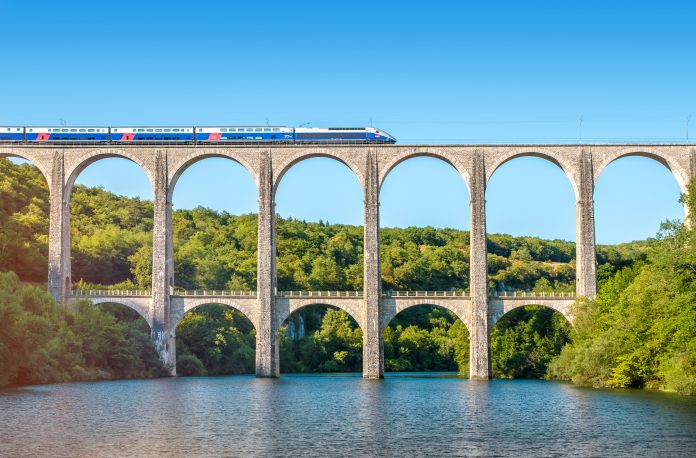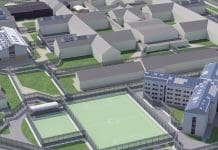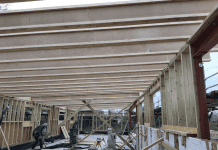HS2 has unveiled 68 large piers that will uphold the Thames Valley Viaduct, the first fully off-site manufactured modular viaduct on the project
Unlike conventional viaduct designs, the Thame Valley Viaduct, spanning 880m, uses a fully factory-manufactured approach. All significant components will be prefabricated off-site, resulting in a carbon footprint reduction of approximately one-third.
Drawing from insights from the construction of recent high-speed rail projects in Spain, the design team chose an efficient structural approach for the Thame Valley Viaduct. This involved using two 25m long hollow beams per span, reducing the need for carbon-intensive concrete and steel while streamlining on-site work.
The 97-tonne beams and 42-tonne supporting piers are in production at PACADAR UK’s factory on the Isle of Grain. This facility is also responsible for manufacturing tunnel wall segments for HS2’s London tunnels. The workforce at the factory has doubled to 200, including apprentices and graduate engineers from nearby universities.
HS2’s main contractor, EKFB, are working with FC Civils Solutions and PACADAR UK to design and construct the Thame Valley viaduct. This is part of an HS2 initiative that includes 15 viaducts.
Net zero Journeys across the Thames Valley Viaduct
“HS2 will offer zero carbon journeys from day one, providing a cleaner, greener way to travel and help the fight against climate change. But we’re also serious about cutting embedded carbon in construction, reducing cost and programme and improving safety, performance and durability,” said Tomas Garcia, HS2’s head of civil structures.
“Thames Valley is a great example of how our contractors are embracing the latest engineering techniques to do just that. It’s great to see the start of work at PACADAR UK, and I look forward to seeing assembly begin on-site later this year,” he added.
The viaduct will enable high-speed HS2 train travel at speeds up to 360km/h, connecting London, Birmingham, and the North. It will also create additional capacity for freight and local services on the current network. The viaduct will be integrated into the surroundings, sitting low within the landscape. The underside of the structure will be just 3m above the ground.
The viaduct will be built with innovative off-site methods
Unlike conventional methods, where viaduct beams are joined using a cast-in-situ concrete diaphragm above each pier,
The Thame Valley viaduct project will use large pre-cast beams that can be directly secured to each other. This is unlike traditional methods viaduct beams are joined using a cast-in-situ concrete diaphragm above each pier. This approach eliminates the need for a diaphragm, resulting in better durability, reliability, time savings, cost reductions, and improved safety by minimising work at height.
In a unique approach, all 68 concrete piers supporting the viaduct will be fully prefabricated off-site and then installed on their foundations. This means that every significant component of the structure will be prefabricated.
This approach reduces embedded carbon emissions from materials and minimises the number of delivery lorries, streamlines construction, reduces waste and minimises disruption to the local community during the construction process.
“This internationally inspired design is the product of best-in-class collaboration between HS2, EKFB and its design partners, Ferrovial Construction and FC Civils Solutions. The solution is a lightweight viaduct, set low into the landscape, that benefits from the efficiencies associated with off-site prefabrication,” said Ignacio Chicharro, EKFB’s project director.

















